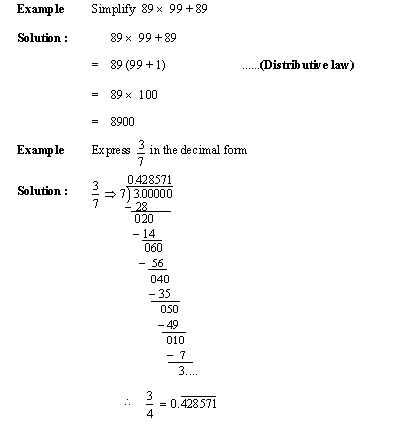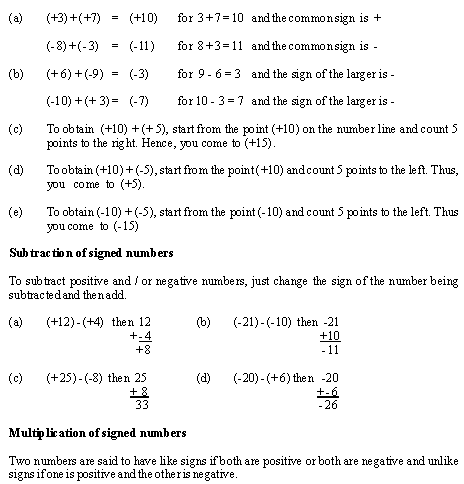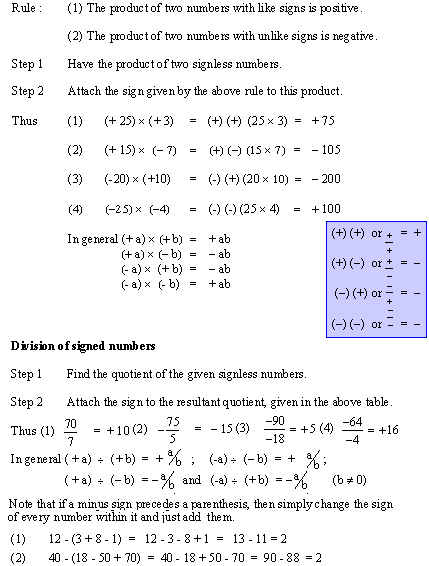 Directed (signed) numbers : On the number line, numbers to
the right of 0 are positive. Numbers on the left of 0 are negative.
(See figure).
Directed (signed) numbers : On the number line, numbers to
the right of 0 are positive. Numbers on the left of 0 are negative.
(See figure).
Given any two numbers, the one on the right is always larger, regardless of its positive and negative sign.  Numbers which are familiar to us in Arithmetic, are called "Signless numbers". Now suppose two trains leave the same place in two opposite directions and run at the rate of 20 km/hr. Their velocities may be said to be (+20) km/hr and (-20) km/hr respectively. Their distances at the end of 3 hours from the starting point will be (+ 60) km and (-60) km respectively. It will be clear that, numbers such as + 20, -20, +60 and are called "directed. Note that the choice of positive direction is purely arbitrary. Once a choice is made, only then it should be adhered to throughout the problem concerned.
Rule (1) If the numbers to be added are of the same sign, add the corresponding sign-less numbers and attach the common sign. Rule (2) If the numbers to be added are of opposite signs, find the difference between the corresponding sign-less numbers and attach the sign of the larger one.   next page]
next page] |
Introduction
Follow @Pinkmonkey_com  |
